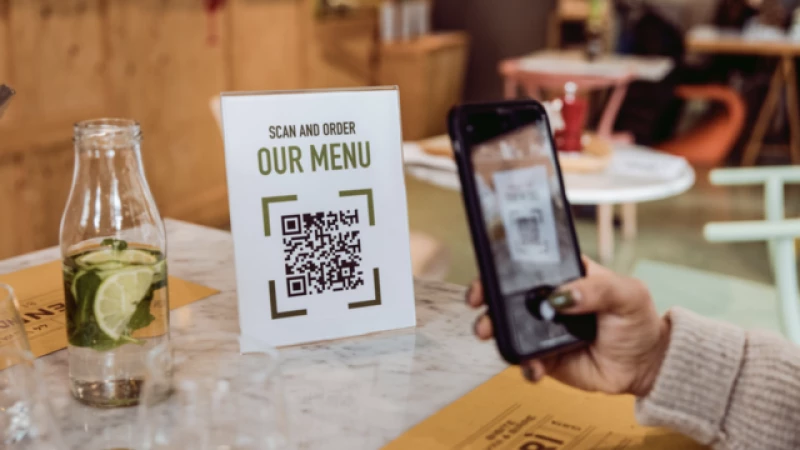Imagine this: your favorite burger and fries could cost you $12 in the morning and a whopping $20 just a few hours later — all at the same restaurant.
What's driving this price rollercoaster? More and more eateries are dabbling in dynamic pricing, a strategy that involves adjusting menu prices based on demand.
If you've ever used ride sharing services like Uber or Lyft, you're no stranger to this concept. These companies often hike up prices during busy times to match high demand, and drop them during slower periods to attract more customers and keep drivers busy.
The airline and hotel industries have long employed dynamic pricing, charging more for flights and rooms during peak seasons. Now, with the digitalization of menus and the rise of online ordering, restaurants are jumping on the bandwagon, much to the chagrin of some diners.
But businesses argue that dynamic pricing helps them manage supply and demand effectively, while also giving customers the chance to snag deals during off-peak hours.
Wendy's caused a stir when the fast-food chain revealed its plans to test dynamic pricing in its restaurants starting in 2025 using digital menu boards. This decision led to a mixed reaction from customers, with some fearing they would be charged more during peak hours. However, Wendy's clarified that the move was aimed at facilitating easier menu changes and offering discounts during slower periods.
Fluctuating Prices
The advent of delivery apps and digital menus, accessible via QR codes, has made it simpler for restaurants to implement dynamic pricing strategies.
Colin Webb, CEO of Sauce, a dynamic pricing engine for restaurants, highlighted in a recent podcast how the industry is following the path taken by retail and taxi businesses when they transitioned online.
One restaurant chain, Puesto in La Jolla, California, reported a 12% increase in sales by adjusting menu prices using Sauce's services. Prices were raised by up to 8% during busy hours and lowered by as much as 20% during slower periods, as outlined in a case study on Sauce's website.
Puesto co-owner Moy Lombrozo expressed satisfaction with the results, stating, "[W]e're happy to see both the markups, and we're also happy to see some discounted orders." Lombrozo explained that offering discounts during slow periods helps keep the kitchen staff engaged and operations running smoothly.
Other restaurant chains like Dave & Busters and Tony Roma's
"A Blow to the Stomach"
Despite this, dining establishments are falling behind other industries when it comes to adopting dynamic pricing strategies.
"Restaurants are slow to catch on to this trend," noted Stephen Zagor, a professor of restaurant management at Columbia Business School. "While we are starting to see some progress, there is still a lack of transparency."
Restaurants have been hesitant to adjust prices based on demand in order to avoid upsetting customers. This reluctance stems from the fact that people tend to have a more emotional attachment to the food they consume compared to other products, Zagor explained.
"When prices fluctuate unexpectedly – one day it's one amount, the next day it's another – it can feel like a blow to the stomach," he remarked. "Not knowing how much we will be charged when dining out is unsettling and leaves a negative impression."
Diners Have More Options
In a sense, dynamic pricing has always been present in the restaurant industry, as dinner menu items are typically priced higher than similar dishes offered during breakfast or lunch service.
"It's not uncommon to find the same burger listed at different prices on lunch and dinner menus," noted food and beverage management consultant Lilly Jan.
Consumers may not like dynamic pricing, but they don't have much choice when it comes to airline and hotel reservations. That might not hold true with restaurants.
"There is a certain cost for getting to one side of the country to the other this time of year. If you need to make it from New York to LA, you only have so many options," she said. "You don't have the same thing going out to dinner with friends. Because you have so many options and experiences available, you can be choosier."
How to make the most of dynamic pricing
Dynamic pricing can increase revenue for businesses, while also offering opportunities for consumers to save.
"It helps companies' profitability, but at the end of the day it also gives customers control over their willingness to pay," said a hospitality finance expert. "It doesn't only mean prices will go up. In theory, restaurants give diners discounts to eat in between meal times when they're less busy."
Look for discounts on food items at off-peak times, like between 10 a.m.-12 p.m., or 3-5 p.m., or during slower times like the holidays and inclement weather.
You can also choose not to support a particular establishment if you find their prices unfavorable.
"When it comes to dining out, customers have the option to choose where they spend their money. If the prices at a restaurant are too high, they can always opt to eat at home or try a different dining establishment. This gives them more control and flexibility in their decision-making," explained Jan, a restaurant consultant.







